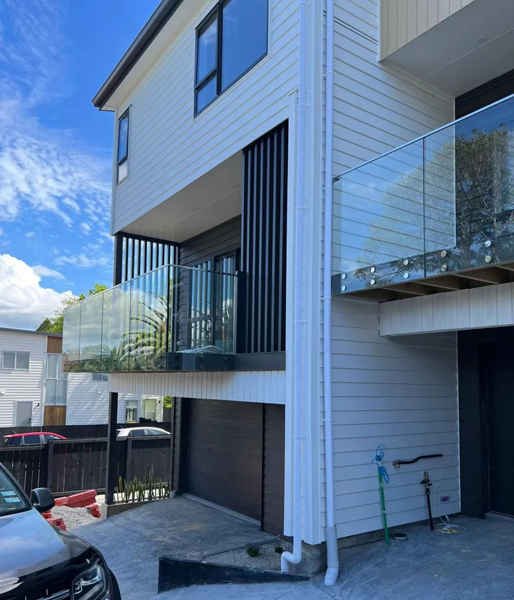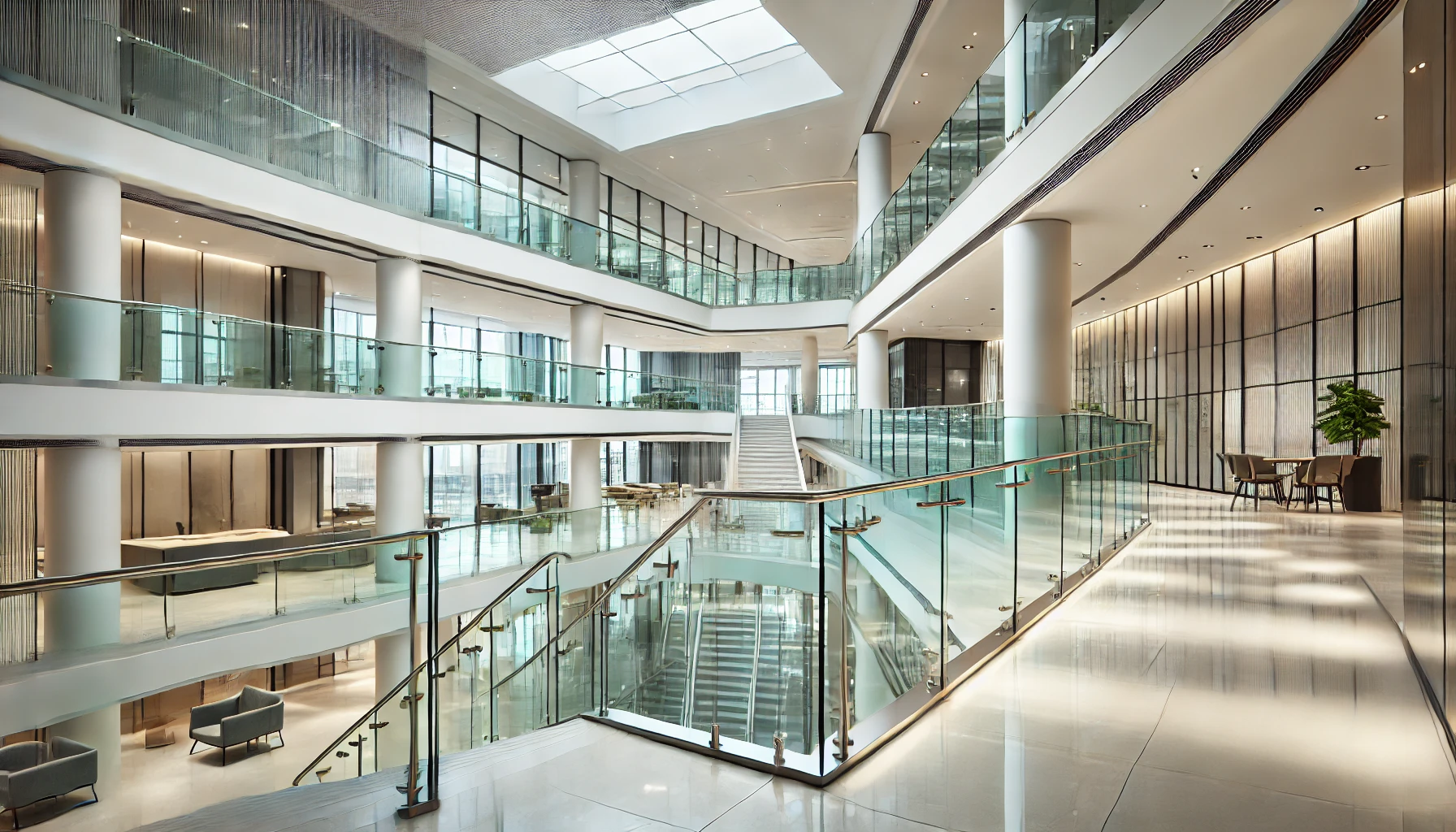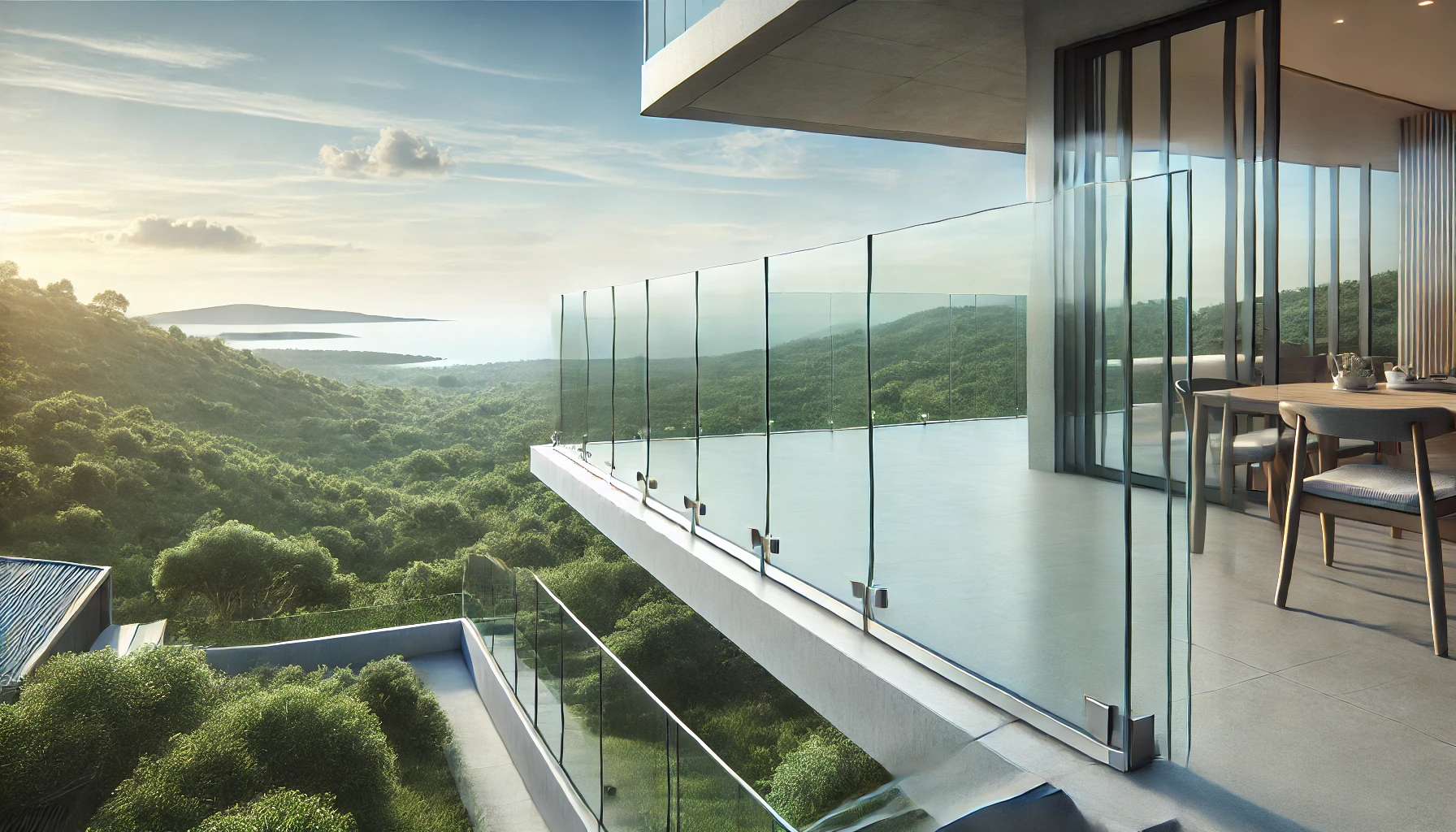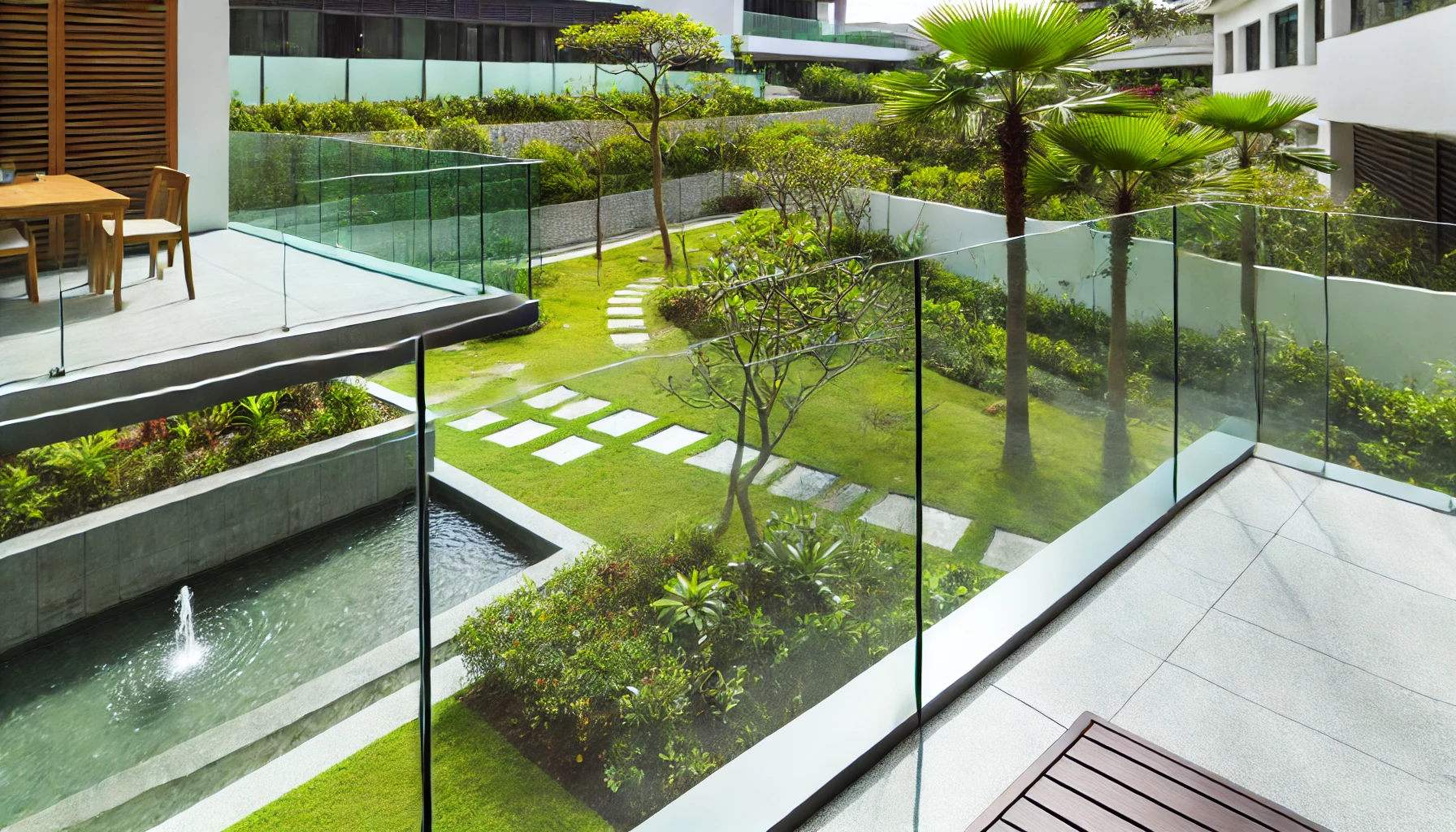Introduction
As the demand for environmentally sustainable building practices continues to grow, architects, builders, and homeowners are increasingly looking for materials that not only enhance the aesthetic appeal of a space but also contribute to a greener, more sustainable environment. Glass railings have emerged as a popular choice in green building projects, offering a range of eco-friendly benefits that align with sustainable design principles. This article will explore how glass railings contribute to green building, highlighting their environmental advantages, energy efficiency, and long-term sustainability.
1. Sustainable Materials and Manufacturing
Glass railings are made primarily from sand, a naturally abundant and renewable resource. The process of manufacturing glass, especially when done using modern, energy-efficient techniques, has a lower environmental impact compared to other materials like metals or plastics.
a) Recyclability of Glass
- Closed-Loop Recycling: Glass is 100% recyclable, meaning that it can be melted down and reformed into new glass products without loss of quality. This closed-loop recycling process significantly reduces the need for raw material extraction and energy consumption, making glass an environmentally friendly choice.
- Reduced Waste: The ability to recycle glass reduces waste sent to landfills. In a building renovation or demolition, glass railings can be removed, recycled, and repurposed, contributing to a circular economy.
b) Energy-Efficient Manufacturing
- Advanced Techniques: Modern glass manufacturing processes have become increasingly energy-efficient. Techniques such as float glass production, which minimizes energy consumption and waste, are commonly used in the creation of high-quality glass panels for railings.
- Use of Recycled Content: Many manufacturers incorporate recycled glass into new products, further reducing the environmental footprint of the manufacturing process.
2. Energy Efficiency and Natural Light
One of the significant environmental advantages of glass railings is their ability to enhance natural light within a space. This not only reduces the need for artificial lighting but also contributes to energy savings and a more comfortable living environment.
a) Maximizing Daylight
- Transparency: Glass railings allow natural light to flow freely through a space, brightening interiors and reducing the reliance on artificial lighting during the day. This is particularly beneficial in multi-story buildings where staircases and balconies can act as light wells, distributing sunlight throughout the building.
- Health Benefits: Increased natural light has been shown to improve mood, productivity, and overall well-being. By incorporating glass railings, building occupants can enjoy these health benefits while also contributing to a more sustainable environment.
b) Energy Savings
- Reduced Lighting Costs: By maximizing the use of natural light, glass railings help lower electricity consumption for lighting. This reduction in energy use contributes to lower utility bills and a smaller carbon footprint.
- Thermal Insulation: When paired with energy-efficient glass, such as low-emissivity (Low-E) glass, railings can also help in maintaining indoor temperatures, reducing the need for heating and cooling, and further saving energy.
3. Durability and Longevity
Glass railings are not only aesthetically pleasing but also incredibly durable. Their longevity means that they require less frequent replacement compared to other materials, which reduces the environmental impact over the lifecycle of a building.
a) Long Lifespan
- Resistance to Corrosion: Unlike metal railings, which can rust, or wood railings, which can rot, glass railings are resistant to environmental factors such as moisture, UV radiation, and temperature fluctuations. This resistance extends the lifespan of the railing system, making it a sustainable choice in the long term.
- Minimal Maintenance: Glass railings require minimal maintenance to keep them looking new. Regular cleaning with eco-friendly cleaning products is usually sufficient, eliminating the need for harsh chemicals or frequent refurbishments.
b) Reduced Need for Replacement
- Less Frequent Upgrades: Due to their durability, glass railings do not need to be replaced as often as other materials. This reduces the demand for new materials and the energy required for manufacturing, transporting, and installing new railings.
- Sustainable Investment: Investing in durable materials like glass railings contributes to the overall sustainability of a building, as it reduces waste and conserves resources over time.
4. Health and Environmental Safety
Glass is an inert material, meaning it does not release harmful chemicals or toxins into the environment, making it a safe choice for both building occupants and the planet.
a) Non-Toxic and Inert
- No Off-Gassing: Unlike some synthetic materials, glass does not emit volatile organic compounds (VOCs) or other harmful substances. This ensures better indoor air quality and reduces the environmental impact during the material’s lifecycle.
- Safe for Recycling: The inert nature of glass makes it safe to recycle without the risk of releasing pollutants into the environment. This contrasts with materials like treated wood or certain plastics, which can release harmful chemicals during recycling or disposal.
b) Environmentally Friendly Maintenance
- Eco-Friendly Cleaning: Maintaining glass railings typically involves simple cleaning with water and mild detergents, which are environmentally friendly. This reduces the need for chemical cleaners that could harm the environment when washed away.
- Low Impact on Surroundings: Glass railings blend seamlessly into their surroundings, causing minimal disruption to natural views and landscapes. This visual harmony contributes to the aesthetic and environmental value of green building projects.
5. Contribution to Green Building Certifications
Incorporating glass railings into a building’s design can contribute to achieving green building certifications, such as LEED (Leadership in Energy and Environmental Design) or BREEAM (Building Research Establishment Environmental Assessment Method).
a) LEED Certification
- Energy and Atmosphere: Glass railings that enhance natural light and improve energy efficiency can earn points under the Energy and Atmosphere category of LEED certification.
- Materials and Resources: The use of recyclable materials, such as glass, and the incorporation of recycled content can contribute to points in the Materials and Resources category.
b) BREEAM Certification
- Health and Wellbeing: Glass railings that increase natural light and improve indoor environmental quality contribute to higher scores in the Health and Wellbeing category of BREEAM.
- Sustainable Materials: The selection of glass as a sustainable material aligns with BREEAM’s emphasis on reducing the environmental impact of building materials.
Conclusion
Glass railings offer numerous sustainability benefits, making them an excellent choice for green building projects. From their recyclable nature and energy efficiency to their durability and non-toxic properties, glass railings contribute to creating environmentally friendly, energy-efficient spaces. By choosing glass railings, architects, builders, and homeowners can enhance the aesthetic appeal of their projects while supporting broader sustainability goals. Whether you’re aiming for green building certification or simply want to reduce your environmental impact, glass railings provide a compelling and sustainable option.







